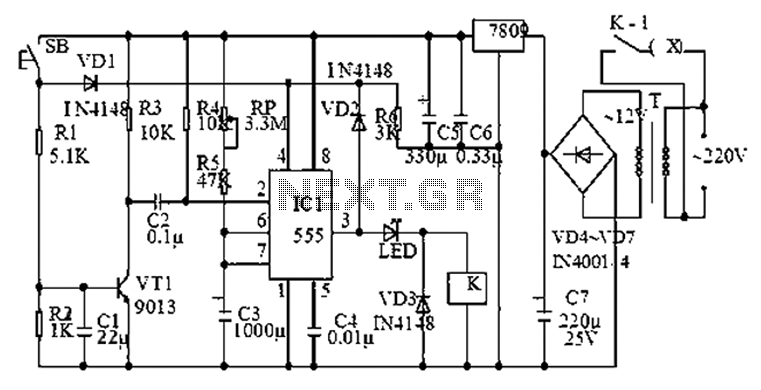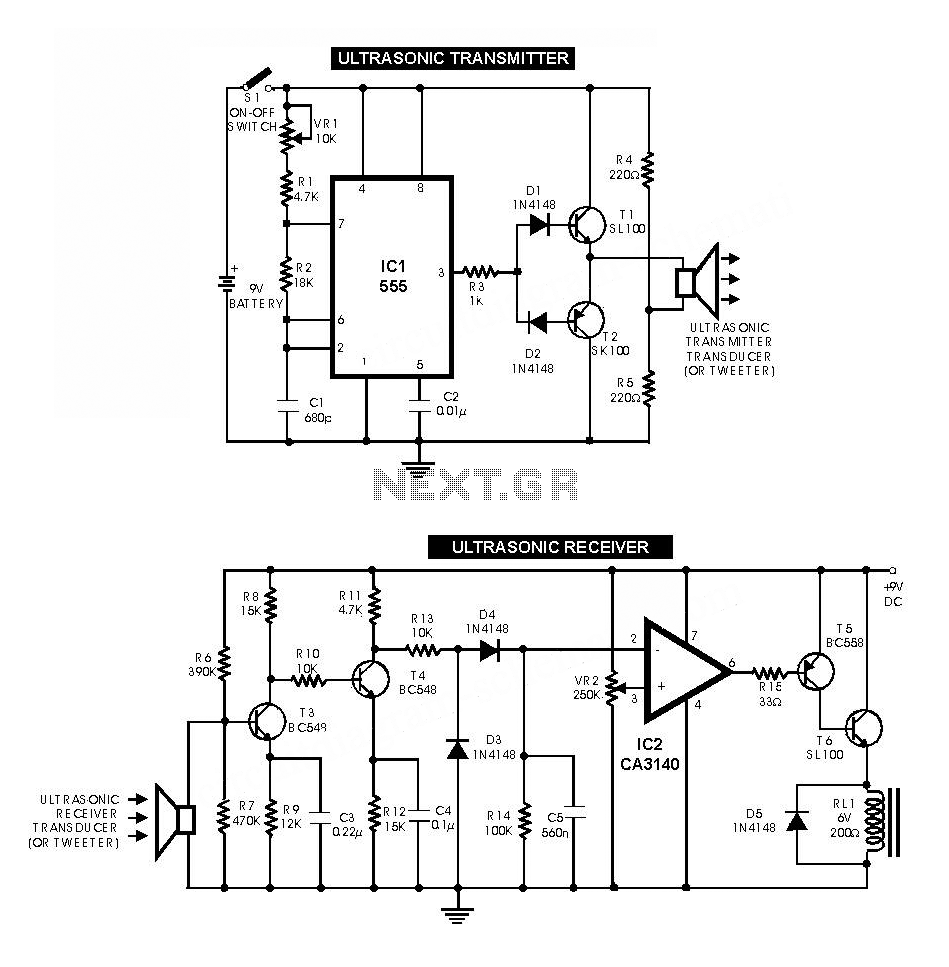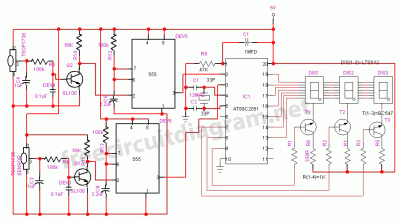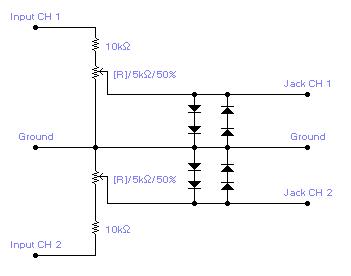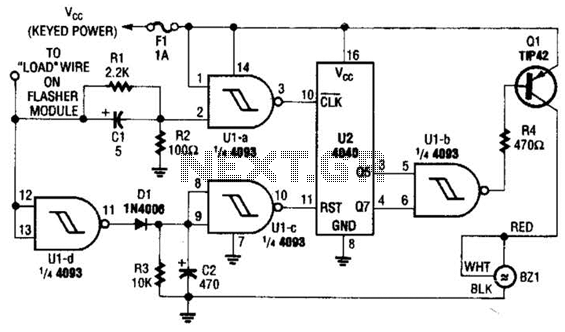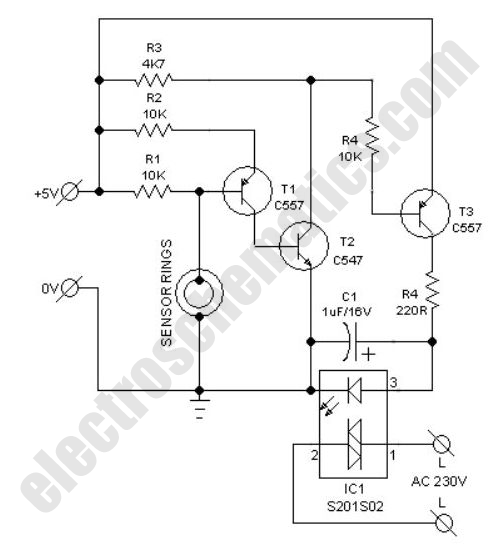
Temperature to Digital Converter Circuit
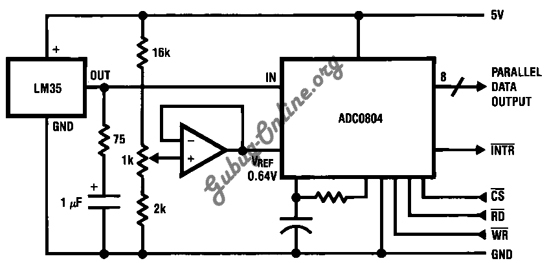
This is a design for a temperature-to-digital converter circuit that is controlled by the LM35 integrated circuit. The LM35 is a precision integrated circuit temperature sensor, whose output voltage is linearly proportional to the Celsius temperature.
The circuit utilizes the LM35 temperature sensor to convert temperature readings into a digital format. The LM35 operates over a range of -55°C to +150°C, providing an output of 10 mV per degree Celsius. This characteristic allows for straightforward interfacing with analog-to-digital converters (ADCs) to facilitate digital signal processing.
In the schematic, the LM35 is connected to a microcontroller or an ADC via its output pin. The microcontroller can be programmed to read the voltage output from the LM35 and convert this analog voltage into a digital value through the ADC, which typically operates in a range of 0-5V or 0-3.3V. The reference voltage for the ADC must be set appropriately to ensure accurate temperature readings.
Additional components may include resistors for voltage division, capacitors for filtering noise, and possibly an operational amplifier to buffer the output signal from the LM35 if necessary. The design should also incorporate power supply decoupling capacitors close to the LM35 to stabilize its operation.
For applications requiring temperature monitoring, this circuit can be integrated into a larger system, such as a microcontroller-based temperature display or a data logging system. The output from the microcontroller can be utilized to trigger alarms or control heating systems based on the temperature readings. Overall, this design provides a reliable method for converting temperature measurements into a digital format suitable for various electronic applications.This is a design circuit for temperature to digital converter circuit that is based control by LM35 IC. This LM35 is precision integrated-circuit temperature sensors, whose output voltage is linearly proportional to the Celsius (Centigrade) temperatu ..
🔗 External reference
The circuit utilizes the LM35 temperature sensor to convert temperature readings into a digital format. The LM35 operates over a range of -55°C to +150°C, providing an output of 10 mV per degree Celsius. This characteristic allows for straightforward interfacing with analog-to-digital converters (ADCs) to facilitate digital signal processing.
In the schematic, the LM35 is connected to a microcontroller or an ADC via its output pin. The microcontroller can be programmed to read the voltage output from the LM35 and convert this analog voltage into a digital value through the ADC, which typically operates in a range of 0-5V or 0-3.3V. The reference voltage for the ADC must be set appropriately to ensure accurate temperature readings.
Additional components may include resistors for voltage division, capacitors for filtering noise, and possibly an operational amplifier to buffer the output signal from the LM35 if necessary. The design should also incorporate power supply decoupling capacitors close to the LM35 to stabilize its operation.
For applications requiring temperature monitoring, this circuit can be integrated into a larger system, such as a microcontroller-based temperature display or a data logging system. The output from the microcontroller can be utilized to trigger alarms or control heating systems based on the temperature readings. Overall, this design provides a reliable method for converting temperature measurements into a digital format suitable for various electronic applications.This is a design circuit for temperature to digital converter circuit that is based control by LM35 IC. This LM35 is precision integrated-circuit temperature sensors, whose output voltage is linearly proportional to the Celsius (Centigrade) temperatu ..
🔗 External reference
Warning: include(partials/cookie-banner.php): Failed to open stream: Permission denied in /var/www/html/nextgr/view-circuit.php on line 713
Warning: include(): Failed opening 'partials/cookie-banner.php' for inclusion (include_path='.:/usr/share/php') in /var/www/html/nextgr/view-circuit.php on line 713
